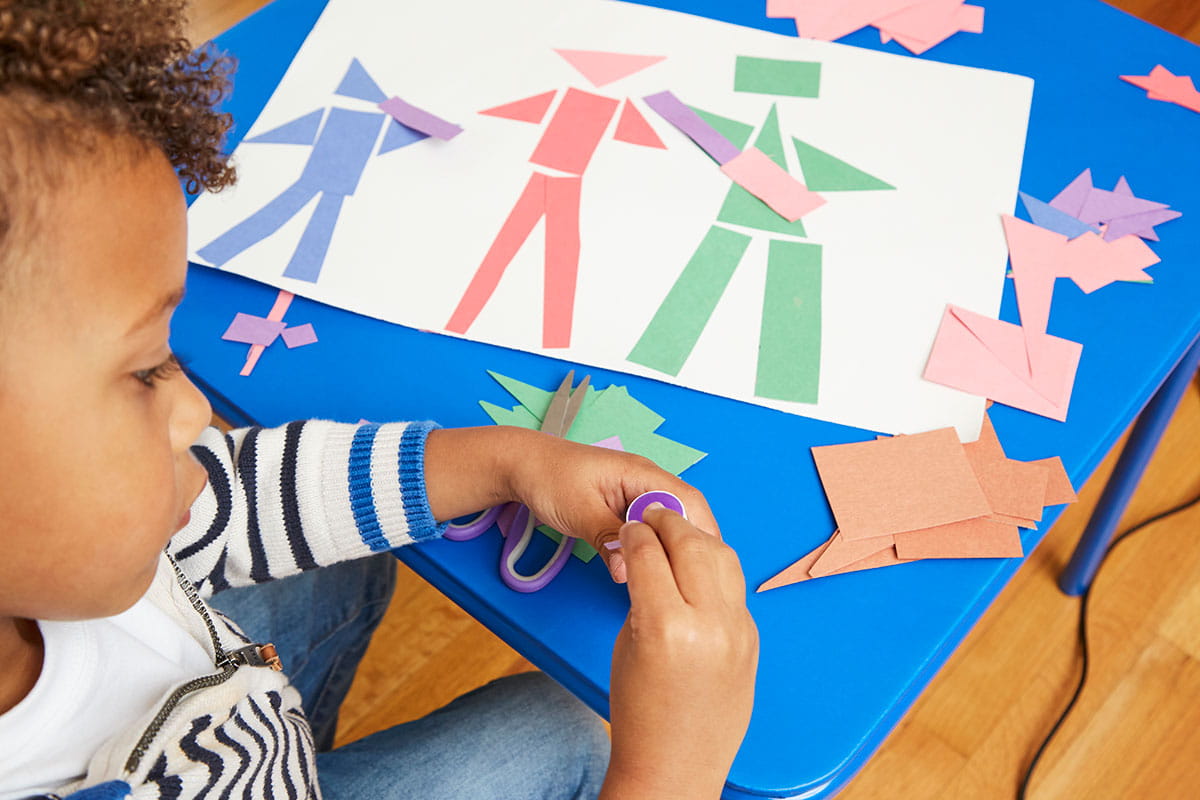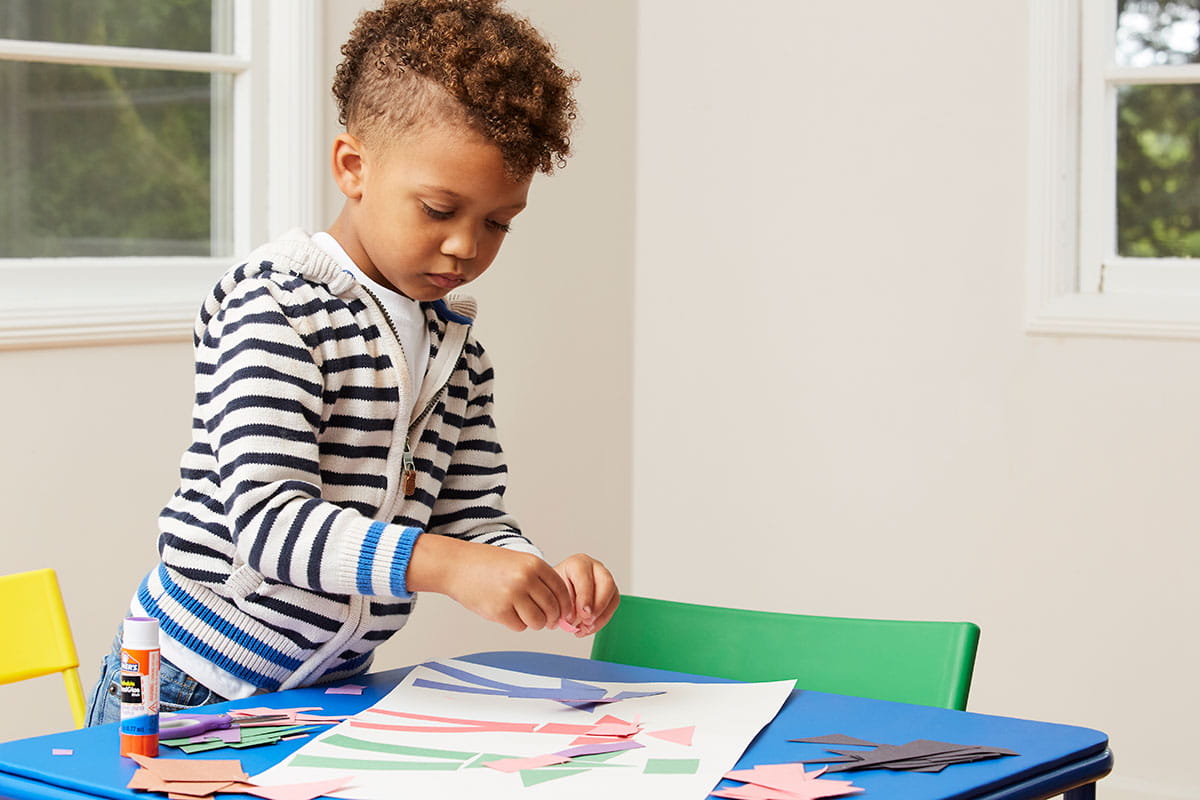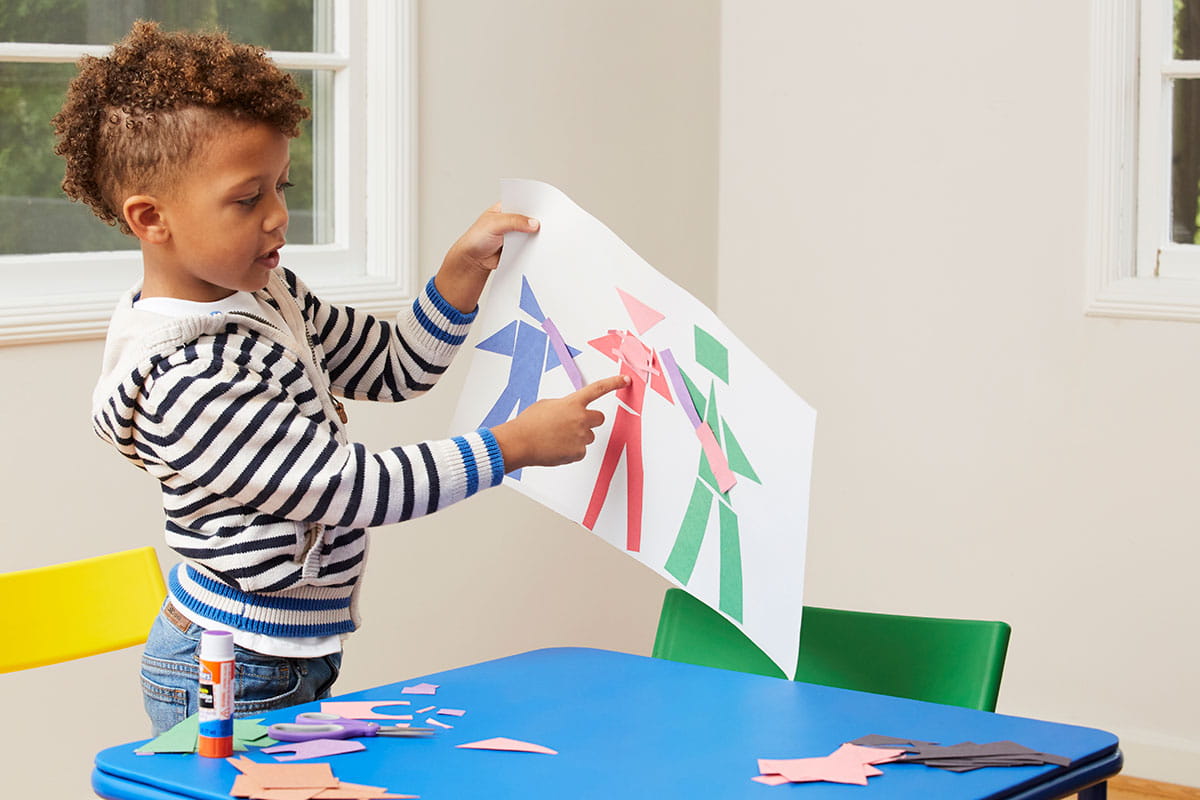Picasso in Pre-K? Absolutely.

This month, our Pre-K kids will be joined by Three Musicians—the Cubist masterpiece by Pablo Picasso.
True, our made-for-the-classroom reprint is a fraction of the painting’s original size. Nonetheless, we believe that great artists and their masterpieces help young children learn.
“The visual arts encourage children to observe, discuss, solve problems, and express themselves creatively,” says Meg Davis, manager of KinderCare Education’s curriculum development. “Children look at art through a mostly unfiltered lens,” Davis says. “And they definitely have the capacity and the curiosity to fully experience and explore art.”
That’s why fine arts—from Miro to Van Gogh to Frida Kahlo—are a core part of our Pre-K program.
So what can Picasso, that Spanish painter and sculptor—and one of the most influential artists in the history of Western art—teach a 4-year-old?
A lot, it turns out. Take a look:

1. Shapes.
A rectangle face, a triangle hat, and people who appear to be, well, flat. The shapes Picasso used to create Three Musicians aren’t perfect and that makes finding them all the more fun.
2. Imagination.
Our teachers ask a lot of open-ended questions—questions that can’t be answered with with a yes or no—and allow children find their own voice, share their own observations, and tell their own stories. Tell me what you see in this painting. Who do you think these musicians are?
3. Feelings.
Children understand that colors create different moods—and talking about those moods helps them name their feelings, which supports children’s emotional development. With its dark hues, Three Musicians evokes a certain feeling (no right or wrong answers here!). We encourage children to share their thoughts: How do these colors make you feel? How do you think the musicians are feeling? What do you think their music sounds like?
4. Vocabulary.
We hope that our kids ace Art History 101 in college, because we’re giving them a foundation in arts education. With Picasso, we teach vocabulary words like “Cubism” and “abstract art.” (For those adults who may have forgotten: Cubism is a style of art that shows things broken down into shapes, for example, squares, triangle, and circles.)

5. Creativity.
Can kids make a Cubist collage? You bet. In our classes, we make giant Picasso-inspired murals. You can also do this at home: Take some old magazines and ask your kids to cut out shapes and glue them onto a piece of paper. No need to make your Cubist collage look like the original. The point is to explore what it’s like to create art and pictures from shapes.
6. Geometry Concepts.
Cubes versus squares. Circle versus sphere. Children at this age can grasp the concepts of 2-D and 3-D shapes. Using 3-D objects around your house (like dice, balls, cereal boxes, toilet paper rolls, or books) check out the shapes together. Note how a cube has squares on six sides, and a cereal box has rectangles on six sides. A toilet paper roll creates two circles!





